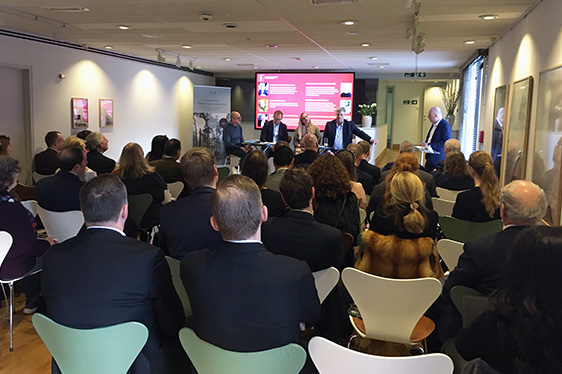Sustainability

Feb 21 2020 - In the limelight of the many festivities taking place in and around London Fashion Week, the International Fur Federation (IFF) launched its sustainability strategy in London this week.
The strategy consists of the three main pillars Good for Welfare, Good for People, and Good for the Environment, and eight major initiatives including the 2020 launch of FURMARK, a global welfare certification and traceability scheme. Read the detailed strategy here.
"Fur is one of the most sustainable natural materials, the epitome of 'slow fashion', and is an industry worth an estimated 30 billion dollars per year that employs hundreds of thousands across the globe. All of those involved in the sector and wider supply chain have a role to play in helping to meet and deliver these ambitious goals, and this strategy will help them to do that," Mark Oaten, CEO of IFF said.
He was complemented by Mr. Ulrik Petersen, the deputy at the Danish Embassy in London, where the event took place:
"We recognise that fur and the concept of sustainable fashion complement one another. Fur is a natural, sustainable material that epitomises the concept of circular, 'slow' fashion. Representing quality, individuality, and accessibility, fur is and remains popular. Fur, therefore, has a role to play as part of the solution to the problems surrounding fast fashion, and this new sustainability strategy emphasises that with clarity," he said.
In a panel debate Gianluca Longo, style editor at British Vogue and Cabana, designer Ineta Joksaite and fur farmers John Papsø and Ryan Holt, shared insight on the realities of using animal fur.
Figures from the IFF show that around one-third of fur garments are purchased second-hand, 16 per cent of fur is restyled and only 12 per cent thrown away. Such figures reflect the essence of a circular economy, a concept for production and consumption seeking to design out waste. The circular economy is becoming increasingly popular in politics, not least in the European Union, where several upcoming legislative frameworks target product longevity and waste reduction.
The International Fur Federation is a sister organisation to Fur Europe, representing the global fur trade. Fur Europe's animal welfare assessment WelFur programme is a part of FURMARK.